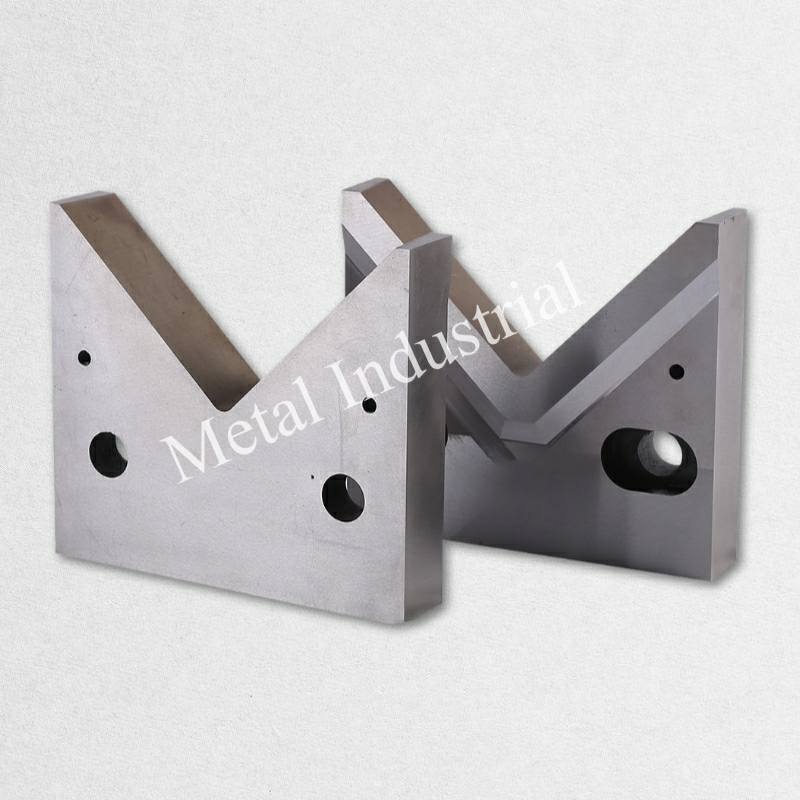
正しい選択 アイアンワーカーマシン交換ブレード 金属加工の効率を大幅に向上させることができます。 カスタムブレード 切断、穴あけ、せん断など、お客様の機械と特定の作業要件に完全に適合するブレードをお選びください。適切なブレードを使用することで、切断精度が向上するだけでなく、ダウンタイムが短縮され、作業員の安全も確保されます。作業現場のオーナーからは、適切なブレードを使用することで機械の動作がスムーズになり、寿命が延びるという報告がよく寄せられています。最良の結果を得るには、ブレードをお選びいただく前に、技術仕様とお客様のフィードバックの両方をご確認ください。
重要なポイント
- お使いの機械と作業に適した刃を選びましょう。これにより、正確な切断が可能になり、刃の寿命も長くなります。– 超硬合金や高炭素鋼などの強度の高い素材で作られた刃を使用してください。これにより、刃の交換頻度が少なくなり、コスト削減にもつながります。– 刃を清潔に保ち、正しい位置に保ちましょう。切れ味を良くするために、頻繁に研ぐようにしましょう。これにより、機械の損傷も防ぎます。– 金属と作業に適した刃を使用してください。例えば、せん断、穴あけ、ノッチングには専用の刃を使用してください。これにより、刃の性能が向上し、寿命も長くなります。– Nanjing Metalのような信頼できるサプライヤーから購入しましょう。カスタム刃の作成や専門的なサポートを受けることができます。これにより、作業効率が向上します。
鉄工機用交換ブレード:選定基準
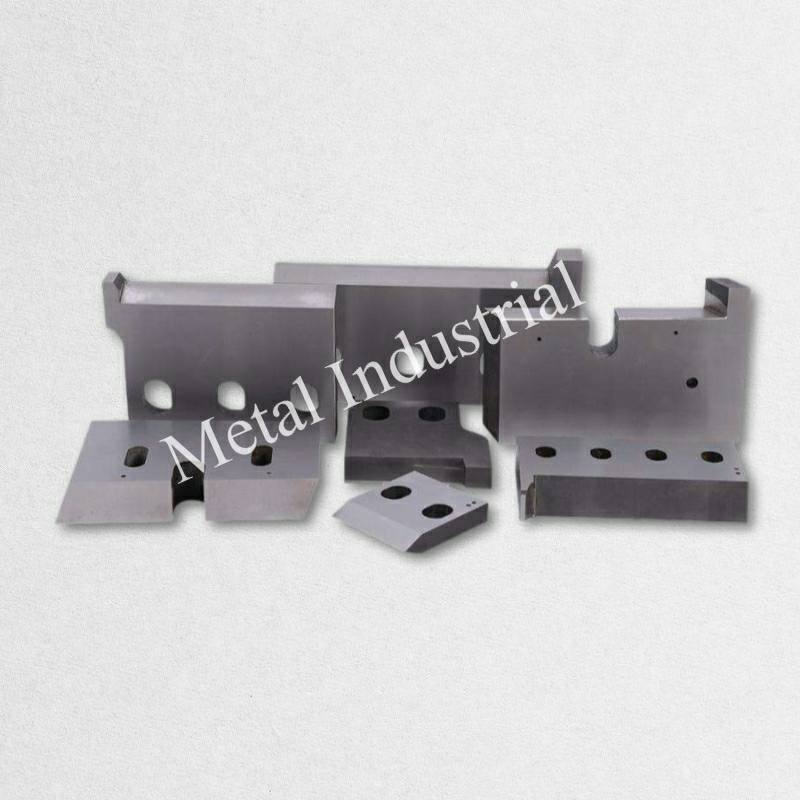
パフォーマンス要因
鉄工機の交換用ブレードを選ぶ際には、いくつかの重要な点に注意する必要があります。これらの点は、最高の仕上がりを実現し、機械を良好な状態に保つために役立ちます。
- 耐久性:超硬チップの刃は長持ちします。頻繁に交換する必要はありません。高炭素鋼の刃は 3~5回研ぐ高級超硬刃は5~8回研ぐことができます。
- 精度:良質な刃は滑らかできれいな切断面を実現します。また、切断面を非常に正確に維持します。これは自動車や飛行機の作業において非常に重要です。小さなミスでも大きな問題を引き起こす可能性があります。
- 防錆処理:錆びは刃の摩耗を早めます。また、刃の交換頻度も高くなります。 クロムまたは粉体塗装 錆びにくいので長持ちします。
- 費用対効果:刃の寿命が長ければ、コスト削減につながります。刃の交換のために作業を中断する必要が減ります。
- メンテナンス:刃を研ぎ直すことで、切れ味が維持されます。また、金属の無駄を減らすことにも繋がります。多くのメーカーは、刃のメンテナンスを行うことでコスト削減と切れ味向上を実現していると述べています。
刃の切れ味、耐久性、そして仕上がりの見栄えも確認しましょう。これらの点に注意することで、鉄工機をより効果的に使いこなせるようになります。
アプリケーションマッチング
作業に適した刃を使うことが重要です。せん断、ノッチング、パンチングにはそれぞれ異なる刃が必要です。せん断用の刃をパンチングに使用すると、切れ味が悪くなり、刃の摩耗も早まります。研究によると、適切な刃を使用することで、必要な力が半分に軽減されることが分かっています。また、刃の寿命も25%以上長くなります。つまり、よりきれいな切り口で刃が長持ちし、作業効率も向上するということです。
ヒント:刃を選ぶ前に、必ずお使いの機械の仕様と切断したい金属の種類を確認してください。そうすることで、最高の仕上がりが得られ、刃を安全に保つことができます。
刃を選ぶ際には業界のルールも重要です。 下の表は考慮すべき主な事項を示しています:
| 基準 | 説明 |
|---|---|
| 品質 | 強力なスチールフレーム、正確な打ち抜き、切断、曲げ、使いやすいコントロール。 |
| 安全コンプライアンス | 安全ガードと緊急停止に関する ANSI B 11-5 規則に従います。 |
| 容量と機能 | 必要なパワー、サイズ、作業に適合します。 |
| 費用対効果 | 使用するマシンの数が少なくなり、コストとスペースを節約できます。 |
| メンテナンスと運用 | メンテナンスがほとんど必要なく、エネルギーを節約でき、メーカーからのサポートも良好です。 |
| 技術の進歩 | CNC 制御とクイックチェンジツールにより、作業を高速化し、停止回数を減らすことができます。 |
用途別トップクラスの鉄工機用ブレード
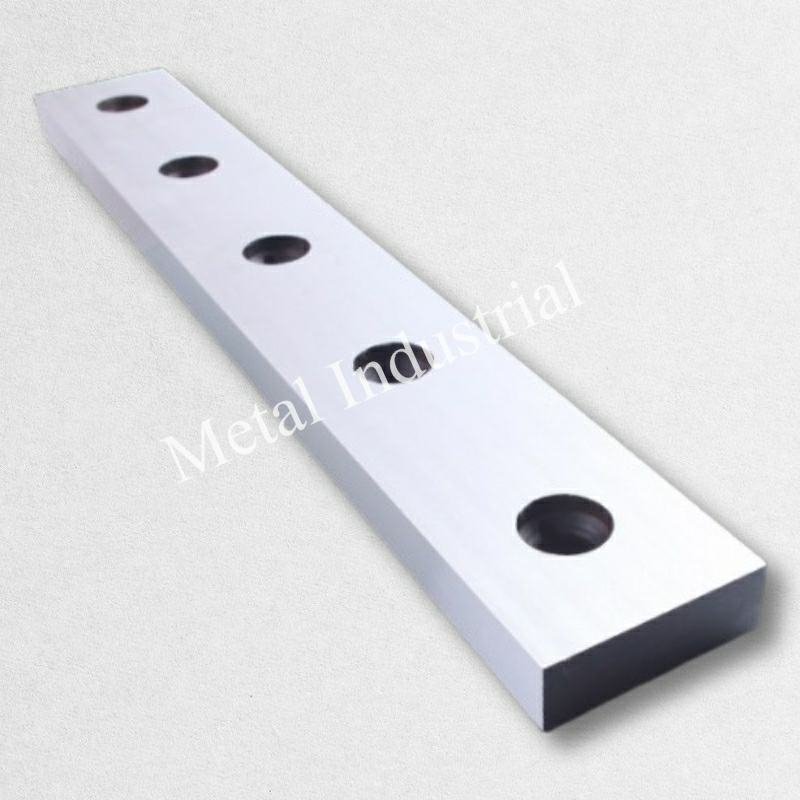
正しいものを選ぶ アイアンワーカーマシン交換ブレード 作業効率の向上に役立ちます。金属加工において、それぞれの刃には特別な役割があります。刃によっては、せん断、ノッチング、パンチング、その他様々な切断に使用できます。作業に適した刃を使用することで、作業効率が向上します。また、機械の寿命を延ばし、滑らかな切断と穴あけを実現します。
せん断刃
製品例
- Metal アリゲーターシアーブレード
これらの刃はクロコダイル鋏とも呼ばれ、ワニ口鋏に使用され、硬い金属の切断に使用されます。スクラップ、棒材、ロッド、混合金属廃棄物などを切断できます。メーカーは65Mn、Cr12MoV、SKD-11、高速度鋼などの高強度材料を使用しています。これにより、刃は長持ちし、切れ味も優れています。
互換性: ほとんどの油圧式鉄工機およびリサイクル機械。 - エドワーズせん断ブレード(AISI D2)
これらのブレードはエドワーズ製鉄工機用に作られています。丈夫で、軟鋼やステンレス鋼をきれいに、そして鋭く切断できます。
互換性: Edwards 鉄工機械。 - ゲカシャーリングブレード (AISI D2)
これらの刃はGekaの鉄工に適しています。長持ちし、バリが少なくきれいな切り口が作れます。
互換性: Geka 鉄工機。
ユーザーフィードバックとアプリケーションノート
良質のせん断刃を使用すると、次のような多くの利点が得られます。
- 切断速度が最大15%速くなります。
- ブレードの交換回数が減るため、ダウンタイムが 67% 減少します。
- 機械修理が25%減少します。
- ブレードの隙間を適切に保つことでエネルギーを節約できます。
- メンテナンスの手間が減るので、時間とお金が節約できます。
- 刃の隙間が適切であれば、切断の品質が向上し、ツールの寿命が長くなります。
- 自動化とセンサーによりブレードのギャップが設定されるため、ミスが少なくなります。
- ブレードの摩耗を追跡するショップは、修正を計画し、大きな問題を防ぐことができます。
金属の硬度と靭性に合った刃の素材を選びましょう。刃先やすくい角などの刃の形状を変えることで、切断が容易になり、エネルギーを節約できます。刃を正しく取り付けることで、金属の曲がりを防ぎ、滑らかな切断面を維持できます。刃を定期的に研磨し、交換することで、機械を最高の状態で稼働させることができます。
ノッチブレード
製品例
- ピラニアノッチャーブレード(AISI D2)
これらのブレードはピラニア鉄工機に適合します。ノッチング作業に最適な切れ味と耐久性を備えています。
互換性あり: Piranha 鉄工機。 - サンライズノッチングブレード(AISI D2)
これらの刃はサンライズマシン用です。きれいなノッチが作れ、お手入れもほとんど必要ありません。
互換性: Sunrise Ironworker マシン。 - エドワーズノッチングブレード(AISI D2)
これらの刃はエドワーズ・アイアンワーカーに合います。フィット感も良く、ノッチングにも最適です。
互換性: Edwards 鉄工機械。
ユーザーフィードバックとアプリケーションノート
金属加工工場の従業員によると、D2鋼のノッチングブレードは欠けたり曲がったりしにくいそうです。多くの作業員は、ブレードを正しく並べることで長持ちすると言います。ノッチングブレードの性能が優れていると、作業効率が向上し、工具の破損も少なくなります。ある作業員は、ノコギリが壊れやすいと語りました。 1年間まっすぐに切る 多くの金属でも、固定することなく切れます。別のユーザーは、ノッチングブレードの強度と精度の高さを高く評価しています。ブレードを頻繁に点検・交換することで、作業の精度を保ち、遅延を防ぐことができます。
パンチングブレード
製品例
- アメリカンパンチパンチダイス(AISI S7)
これらのパンチダイは、多くの鉄工メーカーの製品に適合します。厚鋼板の打ち抜き加工でも耐久性が高く、長持ちします。
互換性: ほとんどの主要な鉄工機械。 - クリーブランド パンチ & ダイ パンチ (AISI S7)
これらのパンチは多くの機械に適合し、多くのパンチングに適しています。
互換性: さまざまな鉄工機械。 - Gekaパンチングツール(AISI S7)
これらの工具はGekaの鉄工用です。長持ちし、毎回きれいな穴を開けることができます。
互換性: Geka 鉄工機。
ユーザーフィードバックとアプリケーションノート
S7スチールパンチングブレードは、ハードな作業にも安心してお使いいただけます。タングステンカーバイドチップにより、ブレードの寿命が延びるという声もいただいています。交換前に3~5回研ぐことができます。切れ味と機械への負担を観察することで、摩耗したブレードを早期に発見できます。良質なブレードは、ダウンタイムと機械の摩耗を軽減します。今では、年間12回だったブレード交換を4回にまで減らしている工場もあります。ブレードを適切な位置に整え、適切なメンテナンスを行うことで、ブレードは長持ちし、良好な状態を保ちます。多くのお客様は、最初は高価でも、最高級のパンチングブレードを使用することで、コスト削減とより良い結果を得ています。
万能ブレード
製品例
- エドワーズユニバーサルブレード(AISI D2)
これらの刃は、様々な切断や切り込み作業に使用できます。エドワーズなどの有名ブランドに適合します。
互換性: Edwards およびその他の鉄工機械。 - サンライズ多機能ブレード(AISI D2)
これらの刃は様々な用途に使用できます。せん断や切り込み入れに使用できます。
互換性: Sunrise Ironworker マシン。 - スコッチマン汎用ブレード(AISI D2)
これらの刃は様々な用途に使われています。使いやすく、性能が良いため、人々に好まれています。
互換性: Scotchman 鉄工機。
ユーザーフィードバックとアプリケーションノート
多岐にわたる作業を行うショップでは、万能ブレードが選ばれています。これらのブレードは様々な作業に適しており、常に良好な切れ味を保っているため、多くのお客様からご好評をいただいています。D2ブレードの使用後、作業効率が向上し、作業停止回数が減ったという声も多数寄せられています。ブレードの切れ味が持続し、取り付けも簡単な点も好評です。ブレードの点検と交換を定期的に行うことで、ショップの稼働を維持し、予期せぬトラブルを防ぐことができます。
アイアンワーカーブレードで得られる確かな成果
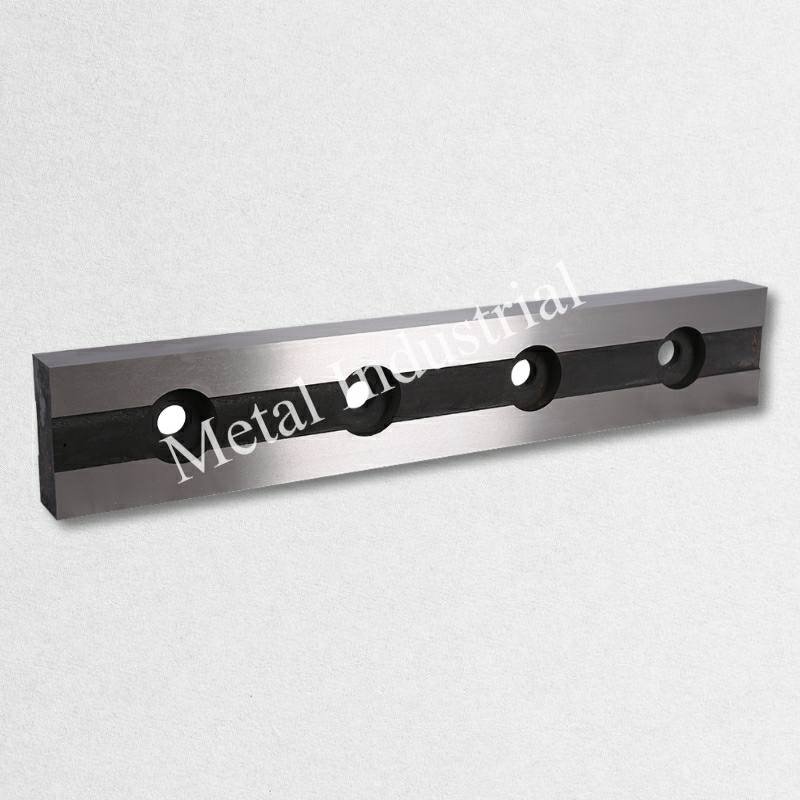
ショップのケーススタディ
ケーススタディ1:構造用鋼工場における生産性の向上
忙しい鉄鋼工場が、高性能のせん断・打ち抜き刃に切り替えました。作業員は作業の完了が早くなり、切断面も滑らかになったと実感しました。チームは30%を導入し、以前よりも作業時間を短縮しました。刃の切れ味が持続したため、ダウンタイムも短縮されました。工場長は「今では作業が早く終わります。機械の性能も向上し、チームはすべての切断に自信を持てるようになりました」と語りました。この事例は、適切な刃を選ぶことで作業のスピードと品質が向上することを示しています。
ケーススタディ2:リサイクル施設のダウンタイム削減
あるリサイクル工場では、刃の交換のために頻繁に工場を止めなければなりませんでした。そこで、硬いスクラップを処理するために新しいアリゲーター型せん断刃を導入しました。その結果、ダウンタイムは67%も減少しました。この刃は混合金属を容易に切断し、作業員の刃詰まりや修理作業も減少しました。工場は新しい刃にかかる費用を削減しました。監督者は「毎日処理できる金属が増え、機械の稼働時間も長くなりました。新しい刃は本当に助かりました」と述べています。
ケーススタディ3:カスタム製作のための精密切断
あるカスタムショップでは、難しい作業のために非常に正確な切断を必要としていました。そこで、彼らは自社の機械に最高級のノッチング刃とパンチング刃を選びました。作業員たちは毎回、きっちりとした切断と滑らかなエッジを実現しました。その結果、より良い製品をより早く出荷できるようになりました。ある作業員は「今では毎日正確に切断できます。当社の刃はお客様が求める品質を提供できると確信しています」と語りました。これにより、金属の無駄が減り、あらゆる作業の効率が向上しました。
よくある問題の解決
Metalショップでは、刃の摩耗が早い、刃の並びが合わない、金属の種類に合わない刃を使用しているといった問題がよく発生します。最高の鉄工機用刃はこれらの問題を解決し、より良い仕上がりを実現します。
問題1:ブレードの急速な摩耗
刃は摩耗が早すぎることがあります。これは、圧力が強すぎる場合や刃の位置が正しく調整されていない場合に起こります。適切な設定で良質な刃は長持ちします。適切な圧力と張力をかけることで、摩耗の進行を防ぐことができます。良質な刃に切り替えた工場では、次のような結果が得られました。
- ブレードの寿命が長くなり、交換の必要性も減りました
- 機械の修理コストの削減
- カットは良好で均一に保たれました
圧力が高すぎると刃が熱くなり、摩耗が早まります。刃やホルダーの位置がずれていると、摩耗が不均一になり、早く破損します。適切な圧力、位置合わせ、そして張力で刃をセットすることで、刃の寿命を延ばすことができます。
問題2:位置ずれとフィット不良
刃が揃っていないと、切り口が悪く見え、刃が早く折れてしまいます。専用の工具を使えば、刃がまっすぐになっているかどうかを確認できます。以下の表は、刃のセットアップを確認するための数値を示しています。
| パフォーマンスメトリック | 値の範囲/しきい値 | なぜそれが重要なのか |
|---|---|---|
| 真っ直ぐさ | 0.4~0.6μm | 刃先をまっすぐに保ち、正確なカットを実現します |
| 軸のずれ | 200 mmあたり6~7インチ | 摩耗の原因となるずれを測定 |
| 垂直性 | 約1μm | 刃が正しい角度にあることを保証します |
| なくなる | ≤ 0.5 μm | 振動と不均一な摩耗を軽減 |
| 全体的な精度 | ≤ 2 μm | 最高のパフォーマンスを得るための適切な設定を確認します |
新しい刃を取り付ける際にこれらの数値を確認することで、刃のズレを防ぐことができます。この数値を確認するお店は作業効率が良く、刃の寿命も長くなります。
問題3:材料の適合性に関する課題
異なる金属を切断する際には、刃の選び方が適切でないと作業が難しくなります。切断する金属の種類に合った刃を選ぶ必要があります。例えば、D2鋼の刃は硬い金属に適しています。ハイス鋼は長い作業に適しています。それぞれの作業に適した刃を使用している工場については、以下をご覧ください。
- よりきれいなカットで、粗いエッジが少ない
- 壊れた工具が減る
- より多くの作業が行われ、無駄な金属が減る
適切な刃を選び、どれだけの負荷に耐えられるかを確認することで、刃の破損を防ぐことができます。刃を強くし、テストすることで、刃の寿命が延び、より効果的に機能します。
良質な刃がいかにコスト削減につながり、作業効率の向上にもつながるかがお分かりいただけるでしょう。例えば:
- レーザーによるタービンブレードの修理で約 各部品$6,297合計すると年間$140万を超えます。
- 電子ビーム作業により材料の使用量が 79% 削減され、チタン部品のコストが $17,430 から $9,810 に削減されました。
- エンジンブレードの先端修理により、最大 81% のコストが節約されました。
- 新しい部品製造方法により、航空機部品のコストが 30% ~ 50% 削減されました。
これらの例は、適切な鉄工機ブレードを選択すると、コストが節約され、作業が高速化され、ショップの作業効率が向上することを示しています。
鉄工機交換用ブレードのメンテナンスのヒント
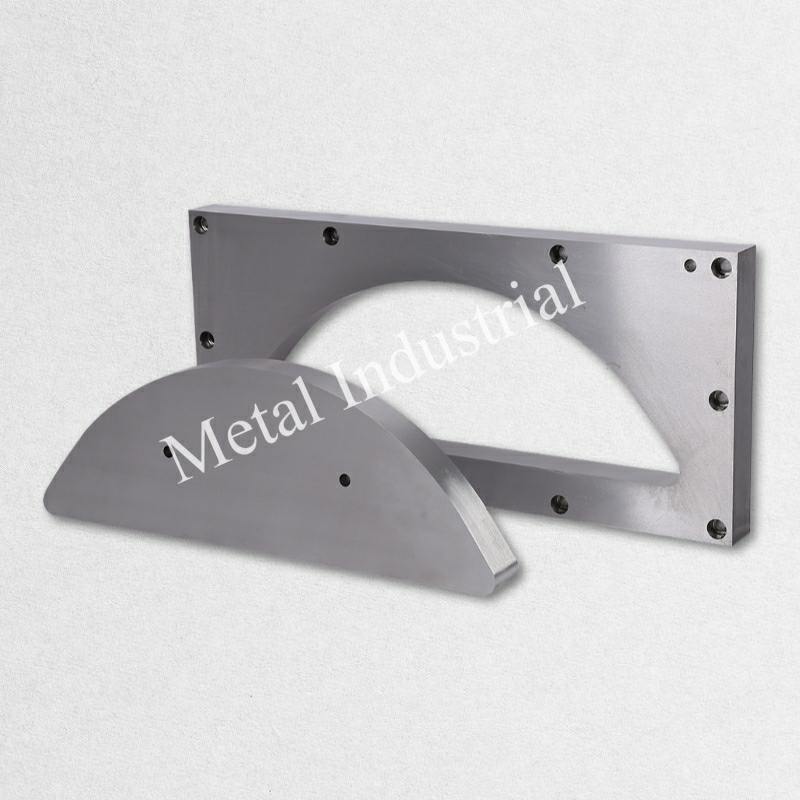
寿命を最大化する
適切な位置合わせと取り付け
作業を始める前に、必ず刃が正しく揃っているか確認してください。刃を正しく揃えることで、まっすぐに切ることができます。また、刃に過度の負担がかかるのも防ぎます。新しい刃を取り付ける際は、適切な工具を使用してください。機械の取扱説明書に記載されている手順に従ってください。刃の摩耗が不均一になったり、早期に破損したりするのを防ぐことができます。刃を正しい位置に保つことで、作業者の安全を確保し、より正確な切断が可能になります。
定期的な清掃と潤滑
8~10時間作業したら刃を掃除してください汚れた金属を切った後は、刃をきれいにしてください。エアダスターか柔らかいブラシを使って汚れを落としましょう。錆びにくく、肌に優しい洗剤を選びましょう。刃は錆びないようによく乾かしましょう。洗浄後は刃にオイルを塗るか、20時間ごとにオイルを塗ってください。オイルは刃の動きをスムーズにし、冷たさを保ちます。これらの手順は、刃の寿命を延ばし、切り口をきれいに保つのに役立ちます。
ヒント:刃を定期的に掃除することで、汚れが蓄積するのを防ぐことができます。刃を安全に保ち、切り口の見栄えも良くなります。
マテリアルハンドリングのベストプラクティス
金属片を移動させる際は注意してください。刃の上に重い金属を落とさないでください。常に 一定の速度で金属を機械に送り込むこれにより、圧力が均一になり、突然の衝撃を防ぎます。突然の衝撃は刃にひび割れや破損を引き起こす可能性があります。適切な取り扱いは、刃と機械の安全を確保します。また、作業場にいる全員の安全確保にも役立ちます。
定期検査と予防保守
刃は定期的に点検する計画を立てましょう。摩耗、ひび割れ、欠けなどの兆候がないか確認しましょう。刃が壊れる前に交換または修理しましょう。刃を早めに点検することで、突発的な問題を回避することができます。また、作業場の稼働を中断することなく、作業を続けることができます。定期的な点検は、作業場にいる全員の安全を守ることにもつながります。
交換用標識
切れ味が鈍くなったり欠けたりする刃先
刃先が鈍くなっていたり欠けていたりする場合は、交換してください。鈍い刃では切り口が荒くなり、機械を傷める可能性があります。
目に見えるひび割れや変形
刃にひび割れや曲がりがないか確認してください。ひび割れや曲がりは刃の強度が弱く、すぐに折れてしまう可能性があります。
切断品質の低下またはバリの増加
切り口が荒かったり、バリが多かったりする場合は、刃が摩耗している可能性があります。作業をきれいに保つために、刃を交換しましょう。
設置や調整の難しさ
刃の差し込みや位置合わせが難しい場合は、刃が曲がったり損傷したりしている可能性があります。新しい刃はよりフィットし、安全に使用できます。
機械の振動や騒音の増加
機械の音が大きかったり、振動が大きかったりする場合は、刃の内部が損傷している可能性があります。これらの音は、ひび割れなどの問題を示している可能性があります。機械を安全かつ正常に動作させるために、刃を交換してください。
注意: これらの標識に注意することで、事故を防ぎ、店舗を安全に保つことができます。
適切な鉄工機用交換刃を選ぶことで、作業効率が向上し、切断精度も向上します。工場では、例えば以下のような実数値を用いています。 刃の摩耗速度 刃の硬さや切断に必要な力の大きさなど、刃の選び方についてご説明します。最高の仕上がりを得るには、作業内容に適した刃を常に使用してください。カスタム刃が必要な場合は、20年の経験と業界での確かな実績を持つNanjing Metalにご相談ください。専門家のサポートが必要な場合は、同社のセールスエンジニアにご相談ください。
よくある質問
自分の仕事に適した鉄工機の交換用ブレードを選択する最善の方法は何ですか?
せん断、ノッチング、パンチングなど、作業内容に合った刃を選びましょう。必ず機械の取扱説明書を確認し、切断する金属の種類を確認してください。不明な場合は、信頼できるメーカーにご相談ください。
鉄工用ブレードはどのくらいの頻度で交換する必要がありますか?
刃が鈍くなったり、ひび割れたり、切れ味が悪かったりする場合は、刃を交換してください。ほとんどの店では刃を毎週点検しています。頻繁に点検することで、トラブルを防ぎ、機械を良好な状態に保つことができます。
1 つの刃を異なる金属に使用できますか?
万能刃の中には、多くの金属を切断できるものもあります。しかし、それぞれの金属に適した刃を使うと、より良い切断結果が得られます。適切な刃を使うと、より滑らかに切断でき、刃の寿命も長くなります。
参照
高硬度のせん断ブレードを選ぶ理由 切断ニーズに合わせて精度と寿命を向上


